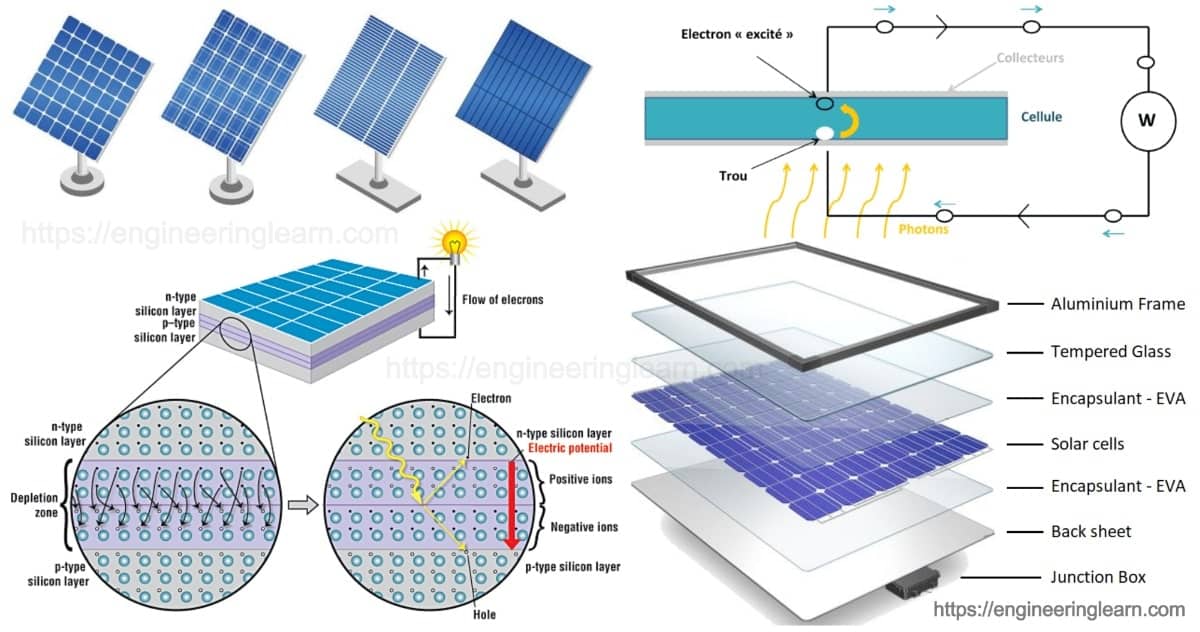Unknown Facts About Solar Systems
Wiki Article
Solar Systems Fundamentals Explained
Table of ContentsSolar Systems - The FactsWhat Does Solar Systems Do?Not known Facts About Solar SystemsThe Definitive Guide to Solar Systems
There are three different sorts of photovoltaic panels: monocrystalline, polycrystalline, and thin film. Monocrystalline solar panels are extremely effective and also have a streamlined design, but come at a higher cost point than other photovoltaic panels. Polycrystalline photovoltaic panels are more affordable than monocrystalline panels, nonetheless, they are much less reliable and also aren't as cosmetically pleasing.Nowadays, there are a number of ranges of monocrystalline solar panels on the market to choose from. Passivated Emitter and also Back Contact cells, even more commonly described as PERC cells, are becoming a progressively prominent monocrystalline option. PERC cells go with a various manufacturing and assembly procedure that boosts the quantity of electrical power the cells can produce.
Since monocrystalline solar cells are made of a single crystal of silicon, electrons have the ability to conveniently stream throughout the cell, increasing general efficiency. Not just do monocrystalline panels have the greatest efficiency rankings, they generally also have the highest possible power capacity ratings, too. Many monocrystalline panels on the marketplace today will have a power output ranking of at the very least 320 watts, yet can increase to around 375 watts or greater!.
Due to the fact that polycrystalline cells include numerous silicon cells, the electrons can not move as conveniently and therefore, lower the efficiency of the panel. The reduced efficiency of polycrystalline panels additionally indicates they tend to have a lower power result than monocrystalline panels, typically ranging in between 240 watts and 300 watts.
The 5-Second Trick For Solar Systems
In order to satisfy your energy needs, you would certainly require to mount even more slim movie panels over a large area to produce the same amount of power as crystalline silicon solar panels. This is why thin film solar panels don't actually make feeling for property setups where area is limited.The temperature coefficient tells you just how much the power outcome will lower by for each 1 * C over 25 * C the panel obtains. The typical temperature coefficient for mono as well as polycrystalline panels typically drops somewhere between -0. 3% and -0. 5% per * C. Thin movie panels on the various other hand, are around -0.
With some slim film panels, it's hard to even see the specific cells within the panel. They likewise have a tendency to have much less electrical wiring and also busbars, indicating there's less white room. Since they are so ineffective, you would certainly need to cover your whole roofing in thin film panels - which may or might not be your style.

Some producers have functioned around this with black packaging or shaping the cells in different ways, yet these visual changes can impact both the price and performance of the panels. Overall, monocrystalline panels still additional reading look streamlined, however they're a bit a lot more noticable than thin movie panels. solar systems. The procedure in which polycrystalline solar batteries are made creates the cells to have a blue, marbled look.
7 Easy Facts About Solar Systems Described
If you get on a tight spending plan, polycrystalline panels may make more sense for you. We do not advise thin movie solar panels for residential setups - their performance as well as durability do not make the affordable worth it, and it's not likely you'll have nearly sufficient space to mount the number of thin movie panels you would certainly require to cover your household electrical energy use.Because they are made from pure silicon, they can be conveniently determined by their dark black shade. Making use of pure silicon likewise makes monocrystalline panels one of the most space-efficient and longest-lasting amongst all three photovoltaic panel kinds. However, this comes at an expense a great deal of silicon is lost to generate one monocrystalline cell, in some cases getting to over 50%.

Amorphous silicon panels (A-Si) derive their more name from their shapeless nature. Unlike mono-and polycrystalline solar cells, the silicon is not structured on the molecular level.
Rumored Buzz on Solar Systems
$0. 32-$0. 65 $1 $1. 50 $0. 70 $1 $0. 60 $0. 70 $0. 50 $0. 60 $0. 43 $0. 50 Note that these numbers don't include the cost of setup and also labor. With labor and also various other above elements, the total can rise to $2. 50 to $3. 50 per watt.
This indicates that thin-film panels can be an excellent option for hotter atmospheres or places that experience more sunshine throughout the year. The upgraded International Structure Code of 2012 calls for solar panels to match the fire rating of the roofing where they are mounted. This is to make certain that the modules do not increase the spread of flames in the event of a fire.
Report this wiki page